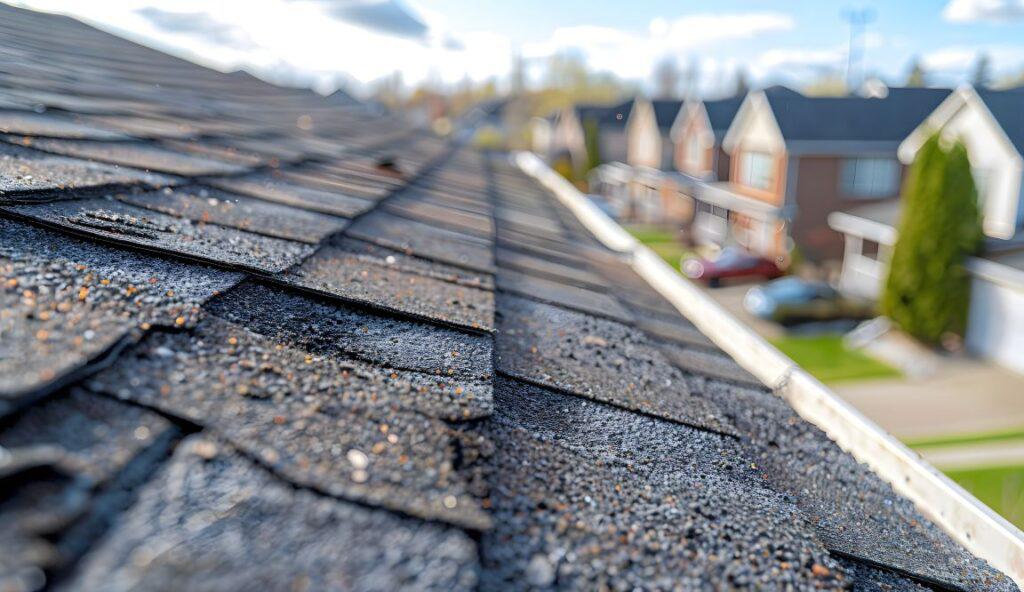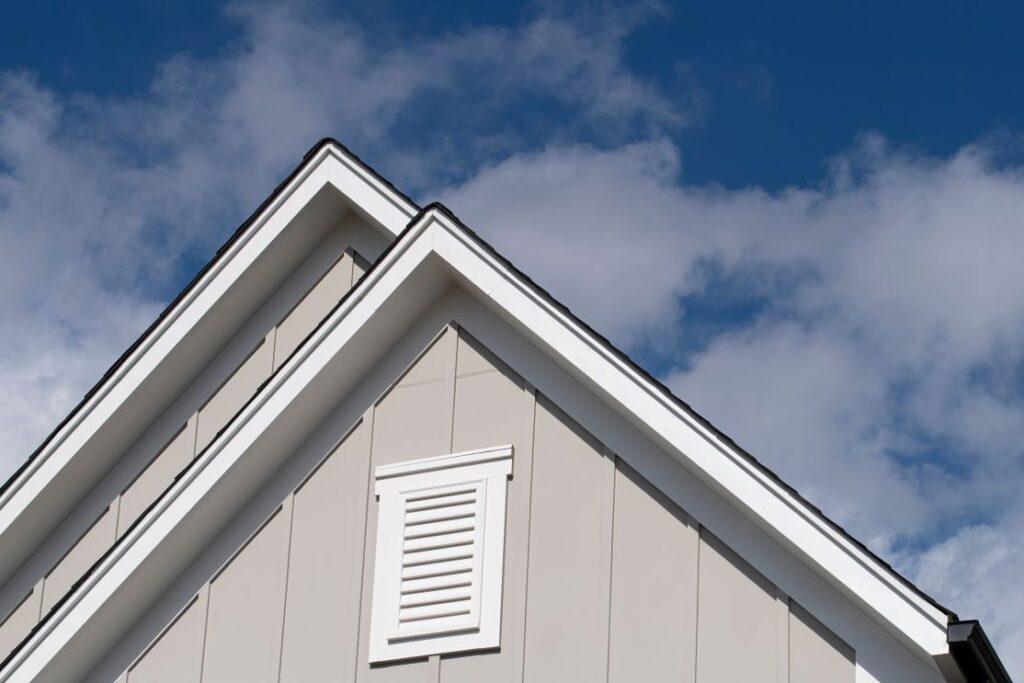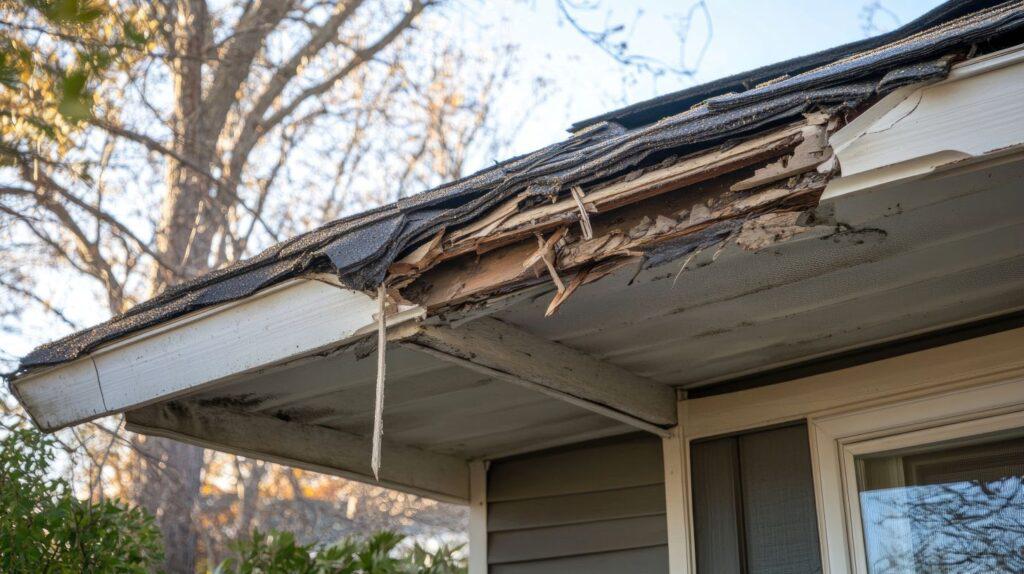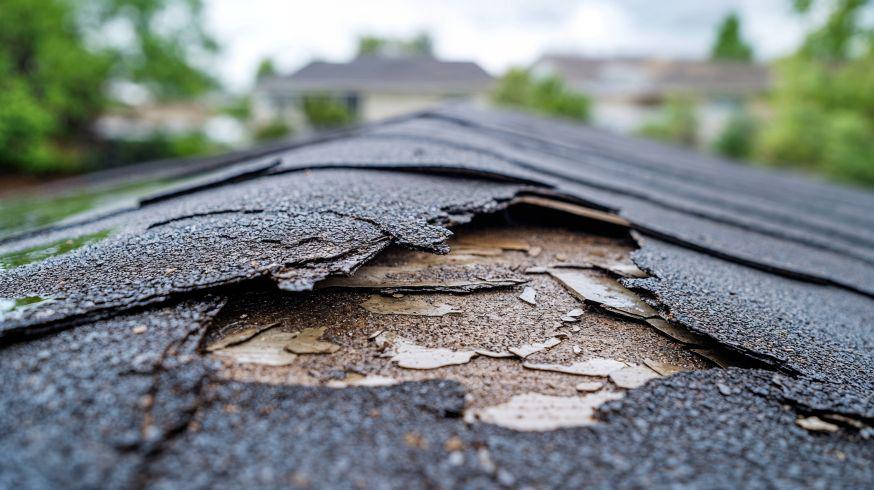Top 5 Roof Problems That Happen in New Homes
Buying a new home is an exciting milestone, but even brand-new construction can have roofing issues. While you’d expect a freshly built home to be free from problems, roofing is one area where mistakes or oversight can lead to long-term headaches. Here are the top five roof problems that commonly occur in new homes, and what you can do to prevent or fix them.
The top 5 roof problems that happen in new homes are:
- Poor Installation
- Inadequate Ventilation
- Flashing Failures
- Poor Drainage
- Low-Quality Roofing Materials

Poor Roof Installation
One of the most common roofing issues in new homes is improper installation. Builders often work under tight deadlines, and sometimes the roof is installed hastily or by workers who lack experience with specific roofing materials. Poor installation can lead to issues like loose shingles, inadequate flashing, and improper sealing, all of which compromise the roof’s durability.
How to Fix It:
- Have a professional roofing contractor inspect your roof for installation defects.
- If you notice leaks, missing shingles, or other issues, address them with the builder while your home is still under warranty.
- Ensure that your roof meets manufacturer specifications for proper installation.

Inadequate Roofing Ventilation
Proper attic ventilation is crucial for maintaining the longevity of your roof. If the attic is not ventilated properly, heat and moisture can build up, leading to mold growth, shingle deterioration, and increased energy costs. Poor ventilation is often overlooked in new construction because it’s not immediately visible, but over time, it can cause serious structural damage.
How to Fix It:
- Check your attic for proper ventilation systems, including soffit and ridge vents.
- Look for signs of excessive heat or moisture, such as condensation on windows, high humidity, or mold.
- Consult with a roofing professional to add or improve ventilation if necessary.

Roof Flashing Failures
Flashing is the material used to seal joints and edges on your roof, particularly around chimneys, skylights, and vents. If flashing is improperly installed, water can seep into your home, causing leaks and water damage. In many new homes, flashing is often secured with temporary sealants instead of being installed correctly, leading to premature failure.
How to Fix It:
- Inspect flashing around roof penetrations to ensure it is properly sealed and secured.
- If you notice any gaps, cracks, or missing flashing, have it repaired immediately.
- Use high-quality, long-lasting materials such as metal flashing instead of temporary sealants.

Ponding Water or Poor Drainage
A well-designed roof should allow water to drain efficiently, but in some new homes, improper slope or gutter installation leads to standing water. Flat or low-slope roofs are particularly prone to ponding, which can cause leaks, mold growth, and even structural damage over time.
How to Fix It:
- Inspect your roof after heavy rain to check for standing water.
- Ensure that gutters and downspouts are correctly installed and directing water away from the home’s foundation.
- If water is not draining properly, a roofing professional may need to adjust the roof’s slope or install additional drainage solutions.

Low-Quality Roofing Materials
Many builders prioritize cost over durability, which can result in the use of lower-quality roofing materials. While these materials may look fine initially, they may not hold up to weather conditions or sun exposure, leading to premature deterioration, leaks, and frequent repairs.
How to Fix It:
- Research the type of roofing materials used on your home and check their expected lifespan.
- If your roof is made of subpar materials, consider upgrading to higher-quality options such as architectural shingles, metal roofing, or tile.
- Regular maintenance and inspections can help extend the life of your roof, even if the materials are not top-tier.
Final Thoughts
Even a brand-new home is not immune to roofing problems. Being proactive about inspections, maintenance, and repairs can help you avoid costly damage down the line. If you suspect any issues with your new home’s roof, it’s best to address them early while your builder’s warranty is still in effect. A well-installed and properly maintained roof will protect your investment and keep your home safe for years to come.
For expert roofing inspections and solutions, contact Roof Scientists today. Our team is dedicated to ensuring that your roof is built to last!
